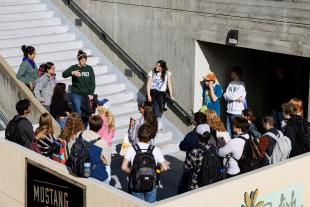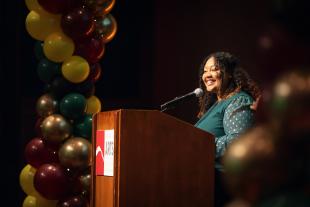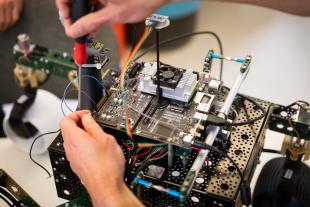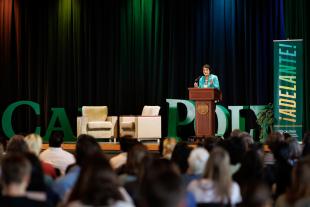Soldiering Onward at Cal Poly
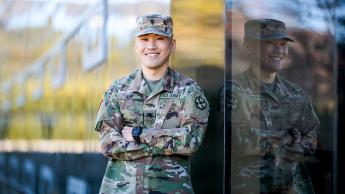
Tae Kim is part of a growing category of veterans at Cal Poly.
The 32-year-old computer engineering senior serves as a biomedical equipment technician in the Army Reserve. He transferred to Cal Poly in 2016 seeking a career in space science or space systems engineering with the hope of working for SpaceX.
“As long as I don’t get deployed, my projected graduation date is June 2022,” said Kim, who joined the service to help fund his education.
Kim spent eight years studying at Los Angeles City College before transferring to Cal Poly’s engineering program because of its affordability. Cost was key — as an undocumented student, he wasn’t eligible for government-funded student aid.
When he was 14, he moved with his family from South Korea to Los Angeles following an economic recession.
“The first few years of settling down in America were very rough for my family,” he said. “Living in a poor neighborhood in Los Angeles does not make life easier. And that meant my safety was compromised at times.”
During his lowest point, Kim said, he was robbed at gunpoint on his way home from work. Still, he remained focused on working to pay for his education. He worked while attending classes, but eventually took a break from academics. Then Kim and his family talked about the reserves.
“I knew of the great benefits the opportunity came with, so I convinced my sister to join along with me,” he said. “There were difficulties. The process to join was much longer for someone who was undocumented.”
Still, Kim says military service is one of the best ways to pay for college.
“Many of my battle buddies — ‘coworkers’ in military terms — at my unit joined to pay for their education, because going to college is expensive — especially if you are not sure about your major or goals yet,” he said. “I think that is one of the main reasons why students join the reserves.”
Kim is part of a growing number of reservist-scholars, who balance student responsibilities with monthly military duties and other commitments. Cal Poly’s student body now includes about 100 conventional vets and some 600 students who are receiving benefits as the children of retired veterans.
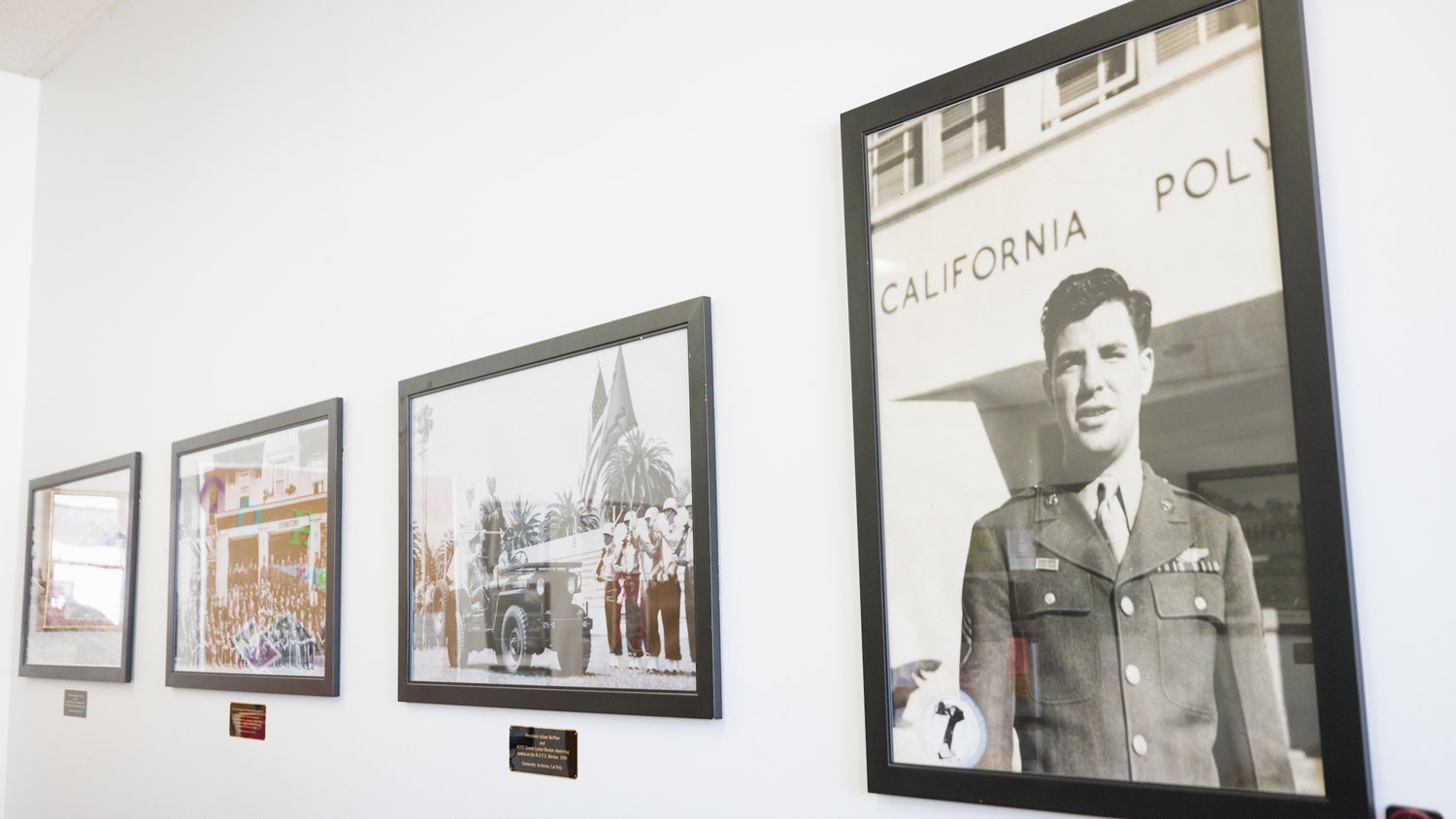
“What we’re seeing is a huge increase in students who have joined the reserves and are funding their education and living expenses through being a reservist. That’s extraordinary,” said Kari Leslie, lead coordinator and a U.S. Department of Veterans Affairs school certifying official at Cal Poly’s Center for Military-Connected Students. “These are students who are not only doing their classes but also still serving.”
Leslie says students like Kim are not only managing their classes, but also traveling up and down the state to serve on everything from crews fighting major wildfires to COVID-19 response teams.
Kim is part of a thriving community of veterans on campus, Leslie said.
“This is an incredibly culturally diverse group mostly made up of first-generation students who are using GI Bill benefits and are the first in their family to obtain a college degree. Cal Poly is working so hard to attract a more diverse student body, and that’s exactly what this population brings to the university.”
Once he transferred to Cal Poly, Kim found guidance at the Dream Center, which alerted him to state Dream Act assistance for undocumented students. Just as critical, Kim found a place where he fit in.
“For the first few years at Cal Poly, I was the only undocumented student in my classes,” he said. “I felt I could not confide in my peers about any problems I had with my classes. At first, I could not find resources to supplement my classes. The Dream Center also introduced me to other undocumented students. I have nothing but gratitude for how the center improved my life at Cal Poly.”
After more than two years, Kim passed the Army's background check and was granted citizenship. His service provided green cards for his parents as well. “This was a pivotal moment for my family since our struggles in the U.S. that began in 2003,” he said.
Quarter after quarter, Kim has learned to sharpen his organizational skills to succeed as a soldier and as a scholar.
“It is very difficult to explain how challenging it is sometimes, even to your fellow soldiers, classmates and professors, because military life and civilian life are vastly different,” said Kim. “There are a lot of times I wish I could have more time to study for a quiz or assignments so I could perform better, but there are only 24 hours in a day and seven days in a week.
“I just have to work harder to keep up the pace for myself.”
During monthly weekend training, or Battle Assembly, he uses any downtime to keep up with his college work. And the work doesn’t end after he’s back in the barracks. He does homework before bed and rises well before the traditional morning bugle call, “Reveille,” to stay on top of his Cal Poly assignments.
“No matter what, you are a soldier first and military duty is the priority,” Kim said. “However, as people say, communication is the key. Frequent communication with professors and with my chain of command relieves a lot of conflicts. I usually check out the dates for midterm and final exams on the first day of class and check my military schedule then explain my situation ahead of time.”
Veterans, like Kim, bring an added dimension to the campus, said Leslie of the Center for Military-Connected Students.
“When we are talking about veterans, we’re talking about leaders on this campus,” she said. “This entire group, not just veterans alone but the entire population — reservists, National Guard and dependents.
“They’re leaders. They’re mentors, and they are really proud of the fact that they are here at Cal Poly and are a part of this community.”
Don't want to miss any of the best Cal Poly News stories? Sign up for our monthly newsletter, the Cal Poly News Recap!

